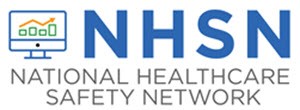Monitor Influenza Vaccination Coverage among your Health Care Personnel
There are several benefits of measuring influenza vaccination coverage for HCP. Collecting and monitoring data allows facilities to recognize trends in influenza vaccination. This may assist the facility in identifying unvaccinated HCP and tailoring educational efforts and vaccination programs to reach these individuals. Facilities can also use the data for strengthening quality improvement activities. Below are tools and resources available to post-acute and LTC facilities to measure influenza vaccination coverage.
Use CDC’s National Healthcare Safety Network to monitor your facility’s influenza vaccination coverage.
In 2012, the National Quality Forum (NQF) endorsed quality measure #0431 on collecting influenza vaccination data among HCP. The Centers for Medicare and Medicaid Services (CMS) currently mandates certain healthcare facilities (such as acute care facilities) to report data using quality measure #0431 to meet requirements of quality reporting programs. Facilities may enter measure data into the National Healthcare Safety Network (NHSN). NHSN is an internet-based surveillance system managed by the Centers for Disease Control and Prevention (CDC). Although there are no mandates for post-acute and LTC facilities to report influenza vaccination coverage data, these facilities may monitor HCP influenza vaccination data using NHSN (even if not required to do so).
The NHSN measure for LTC facilities collects weekly influenza vaccination data on HCP who physically worked in a healthcare facility for at least one day during the prior 7 days (October 1 through March 31).
For each HCP category, facilities report the following influenza vaccination status data:
- HCP receiving an influenza vaccination at the healthcare facility since influenza vaccine became available this season
- HCP providing a written report or documentation of influenza vaccination received outside the healthcare facility since influenza vaccine became available this season
- HCP who have a medical contraindication to the influenza vaccine
- HCP who declined to receive the influenza vaccine this season
- HCP having an unknown vaccination status (or did not meet the criteria for any of the other categories)
Post-acute and LTC facilities can enroll in NHSN to report HCP influenza vaccination data. NHSN comprises several components where facilities report various types of data pertaining to HCP and patients. To report weekly HCP influenza vaccination data, LTC facilities can enter data into the HCP Vaccination Module, which is part of the Long-Term Care Component. This module is designed to ensure that HCP influenza vaccination coverage is consistent over time within a LTC facility and comparable across facilities.
A facility will need to complete a few steps before they can begin entering data into NHSN:
- Enroll facility in NHSN: https://www.cdc.gov/nhsn/ltc/enroll.html
- Review data collection forms and training materials on HCP influenza vaccination data reporting: https://www.cdc.gov/nhsn/ltc/vaccination/index.html
Add the Long-Term Care Component to the facility in NHSN: https://www.cdc.gov/nhsn/ltc/vaccination/index.html
The National Adult and Influenza Immunization Summit (NAIIS) has also developed resources that post-acute and LTC facilities can use to track and evaluate HCP vaccination data. A spreadsheet, like the NAIIS Influenza Vaccine Roster, can help track the vaccination status of HCP and help keep information organized and easily accessible. NAIIS also provides tools for staff to visually see how the facility and different units within the facility stand in terms of influenza vaccination coverage.
